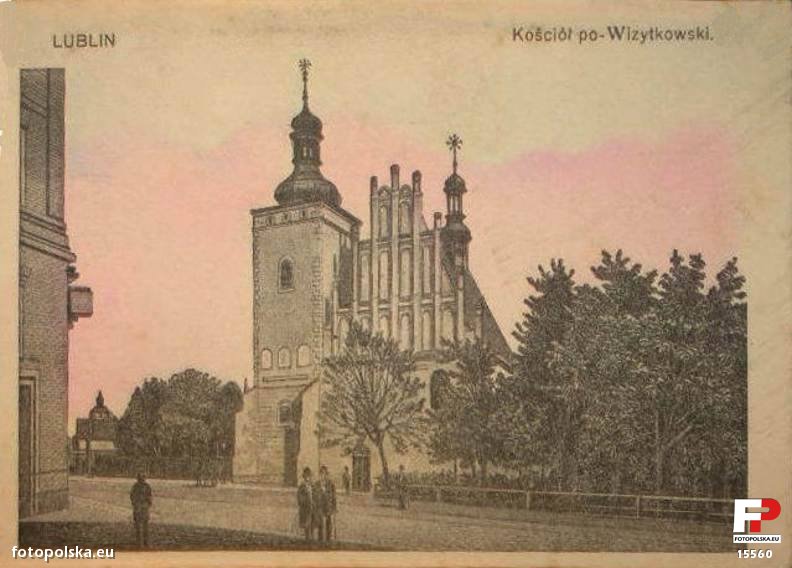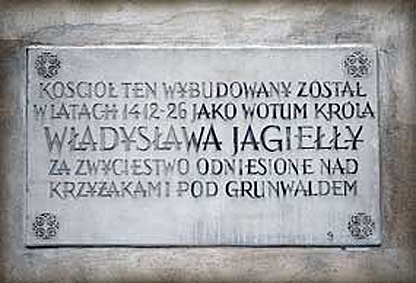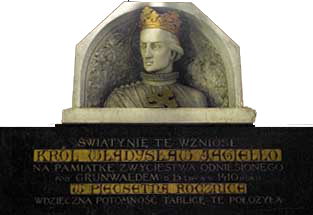
This event is documented by 3 commemorative plaques, which are located in the chapel of the Blessed Mary and St. Juda-Thaddeus, under the stucco bust of the King - the founder, in a semi-circular niche above the main entrance to the church and in the niche imitating the entrance on the pediment of the church.
Next to the Church, also on initiative of the king, there was built a Bridgettines' monastery ( for nuns and monks), who were brought from Gdansk. It was believed for that the defeat of the Teutonic Order had already been predicted by St. Bridget in her earlier writings. Władysław Jagiełło himself believed that he himself had been a prophesied Commander, who was to punish the Order for the crimes they committed.
According to tradition, the principles of the functioning of the Order of the Most Holy Saviour (so-called Brigids) were revealed to St. Bridget by the Christ himself. Its original feature was that in those monasteries religious sisters and monks lived side by side separated by the monastic wall, while the monastery was in charge of the Abbyss. However, the Tridentine reforms have eliminated the male division (the end of the 16th century). The convent in Lublin was one of the first Brigidian monasteries in Poland, beside existing ones in Gdańsk and Elblag. In the opposite however to the two remaining, which has struggled with financial or organizational problems, the Order in Lublin developed under favorable conditions and for many years was the only female convent on the east of the Vistula River.
On the west wall of the northern chapel in the conch-shaped niche there is a bust of the monarch, King Władysław Jagiełło from the year 1910. On the head of the King there is a royal crown, there is a cross around his neck, a robe tied on his right shoulder. The background of the niche depicts an oak's leaf relief. Beneath the niche there is an inscriptive brown marble plaque with a gold epigraph:
THE CHURCH HAS ERECTED BY
THE KING WŁADYSŁAW JAGIEŁŁO
IN REMEMBRANCE OF THE VICTORY
OF GRUNWALD ON 15 JULY 1410
FOR THE QUINCENTENARY
THE GRATEFUL POSTERITY PUT THIS PLAQUE








